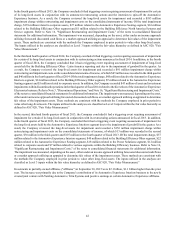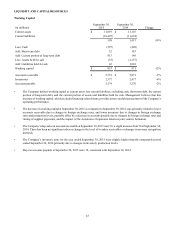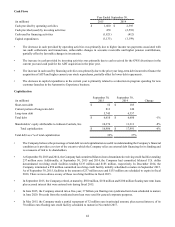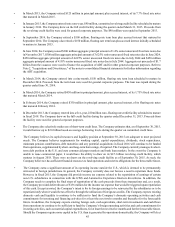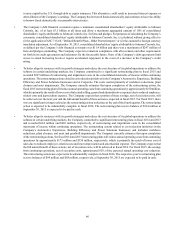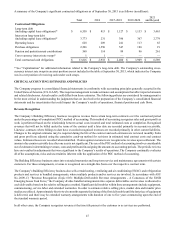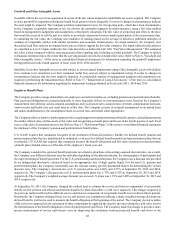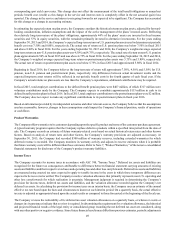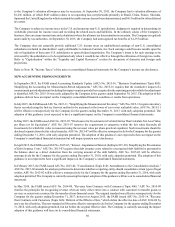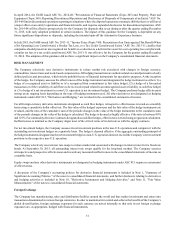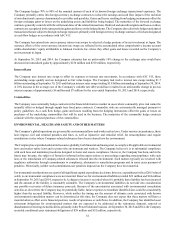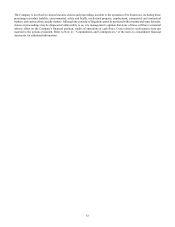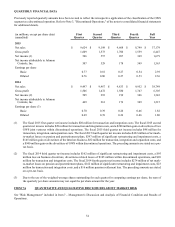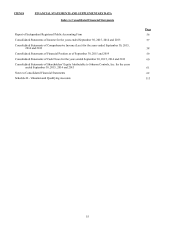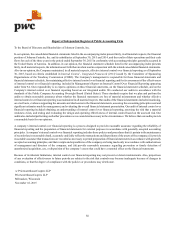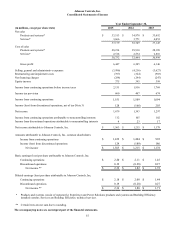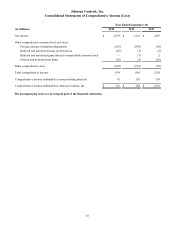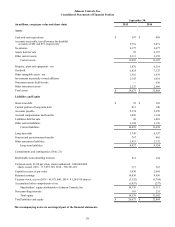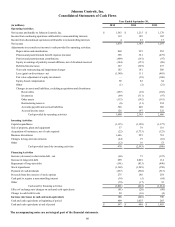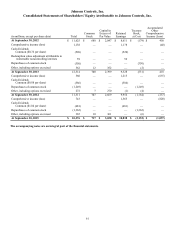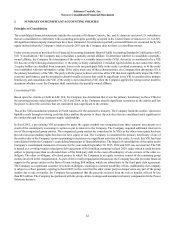Johnson Controls 2015 Annual Report Download - page 52
Download and view the complete annual report
Please find page 52 of the 2015 Johnson Controls annual report below. You can navigate through the pages in the report by either clicking on the pages listed below, or by using the keyword search tool below to find specific information within the annual report.52
The Company hedges 70% to 90% of the nominal amount of each of its known foreign exchange transactional exposures. The
Company primarily enters into foreign currency exchange contracts to reduce the earnings and cash flow impact of the variation
of non-functional currency denominated receivables and payables. Gains and losses resulting from hedging instruments offset the
foreign exchange gains or losses on the underlying assets and liabilities being hedged. The maturities of the forward exchange
contracts generally coincide with the settlement dates of the related transactions. Realized and unrealized gains and losses on these
contracts are recognized in the same period as gains and losses on the hedged items. The Company also selectively hedges anticipated
transactions that are subject to foreign exchange exposure, primarily with foreign currency exchange contracts, which are designated
as cash flow hedges in accordance with ASC 815.
The Company has entered into cross-currency interest rate swaps to selectively hedge portions of its net investment in Japan. The
currency effects of the cross-currency interest rate swaps are reflected in the accumulated other comprehensive income account
within shareholders’ equity attributable to Johnson Controls, Inc. where they offset gains and losses recorded on the Company’s
net investment in Japan.
At September 30, 2015 and 2014, the Company estimates that an unfavorable 10% change in the exchange rates would have
decreased net unrealized gains by approximately $234 million and $210 million, respectively.
Interest Rates
The Company uses interest rate swaps to offset its exposure to interest rate movements. In accordance with ASC 815, these
outstanding swaps qualify and are designated as fair value hedges. The Company had twelve interest rate swaps totaling $1.7
billion outstanding at September 30, 2015 and thirteen interest rates swaps totaling $1.8 billion outstanding at September 30, 2014.
A 10% increase in the average cost of the Company’s variable rate debt would have resulted in an unfavorable change in pre-tax
interest expense of approximately $6 million and $7 million for the year ended September 30, 2015 and 2014, respectively.
Commodities
The Company uses commodity hedge contracts in the financial derivatives market in cases where commodity price risk cannot be
naturally offset or hedged through supply base fixed price contracts. Commodity risks are systematically managed pursuant to
policy guidelines. As a cash flow hedge, gains and losses resulting from the hedging instruments offset the gains or losses on
purchases of the underlying commodities that will be used in the business. The maturities of the commodity hedge contracts
coincide with the expected purchase of the commodities.
ENVIRONMENTAL, HEALTH AND SAFETY AND OTHER MATTERS
The Company’s global operations are governed by environmental laws and worker safety laws. Under various circumstances, these
laws impose civil and criminal penalties and fines, as well as injunctive and remedial relief, for noncompliance and require
remediation at sites where Company-related substances have been released into the environment.
The Company has expended substantial resources globally, both financial and managerial, to comply with applicable environmental
laws and worker safety laws and to protect the environment and workers. The Company believes it is in substantial compliance
with such laws and maintains procedures designed to foster and ensure compliance. However, the Company has been, and in the
future may become, the subject of formal or informal enforcement actions or proceedings regarding noncompliance with such
laws or the remediation of Company-related substances released into the environment. Such matters typically are resolved with
regulatory authorities through commitments to compliance, abatement or remediation programs and in some cases payment of
penalties. Historically, neither such commitments nor penalties imposed on the Company have been material.
Environmental considerations are a part of all significant capital expenditure decisions; however, expenditures in fiscal 2015 related
solely to environmental compliance were not material. Reserves for environmental liabilities totaled $23 million and $24 million
at September 30, 2015 and 2014, respectively. A charge to income is recorded when it is probable that a liability has been incurred
and the amount of the liability is reasonably estimable. The Company’s environmental liabilities do not take into consideration
any possible recoveries of future insurance proceeds. Because of the uncertainties associated with environmental remediation
activities at sites where the Company may be potentially liable, future expenses to remediate identified sites could be considerably
higher than the accrued liability. However, while neither the timing nor the amount of ultimate costs associated with known
environmental remediation matters can be determined at this time, the Company does not expect that these matters will have a
material adverse effect on its financial position, results of operations or cash flows. In addition, the Company has identified asset
retirement obligations for environmental matters that are expected to be addressed at the retirement, disposal, removal or
abandonment of existing owned facilities, primarily in the Power Solutions business. At September 30, 2015 and 2014, the Company
recorded conditional asset retirement obligations of $59 million and $52 million, respectively.


